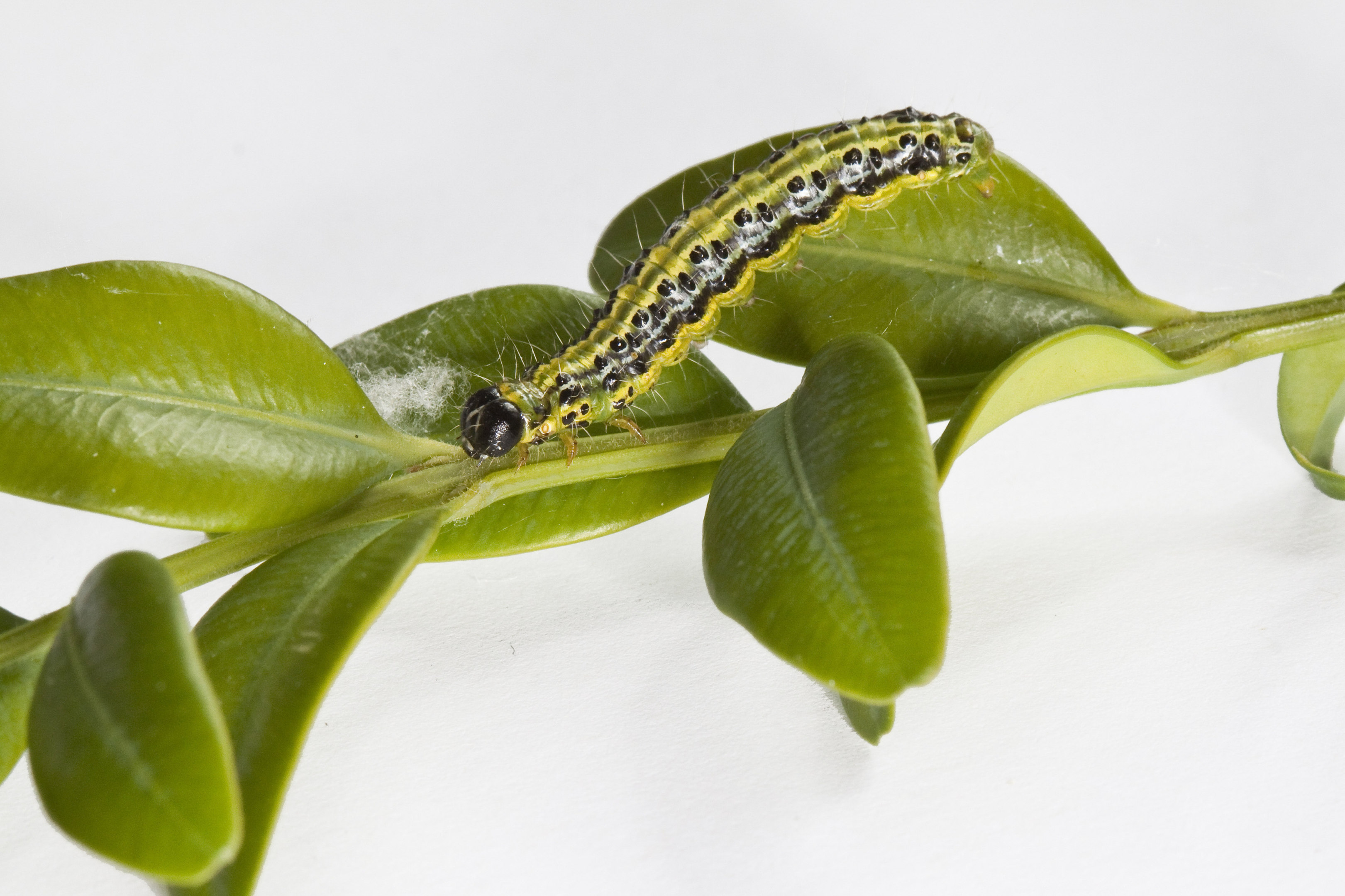
IT was a bad year for gardeners with box plants as a caterpillar that strips them of leaves topped the Royal Horticultural Society’s annual pests and diseases list.
The box tree caterpillar returned to the top of the 2017 ranking, which is based on enquiries to the RHS by gardeners seeking advice on dealing with troublesome pests, up from seventh place last year.
The caterpillar, a native of East Asia first discovered in the UK in 2011, feeds vociferously on box plants under a blanket of pale fine webbing that can cover infected plants. It previously occupied the top spot in 2015.
Box plants, which are a particular feature of more traditional formal planting and in stately home gardens, have also faced disease problems from box blight and volutella blight.
Both diseases, which cause twig and leaf death, featured in the top 10 diseases in 2017, a list which was topped by honey fungus again this year.
The RHS said the box tree caterpillar was one of a number of new and emerging threats it was seeing queries about, along with fuchsia gall mite, alder leaf beetle and kerria twig and leaf blight.
Dr Gerard Clover, head of plant health at the RHS, said a “citizen science” scheme asking people to report cases of box tree caterpillar had also shown increased sightings, with 536 reports in 2016 but 3,587 in 2017.
“It only affects box, which is good, but it really does devastate box.
“Whole plants are defoliated, and it produces a webbing around the caterpillar, so it’s quite difficult to control.
“If you have a more formal garden still, or one of the stately homes, you’re going to have a particular problem with it, but it’s also a widely grown plant.”
He added: “This year’s pest and disease ranking points to the continuing problems inflicted on gardens by old foes like honey fungus, but also new and emerging threats like box tree caterpillar, fuchsia gall mite and kerria twig and leaf blight.
“With new pests and diseases emerging in continental Europe, it has never been more important that people get to grips with what is going on in their gardens.”
The top 10 pests for 2017 were:
1. Box tree caterpillar
2. Fuchsia gall mite
3. Vine weevil
4. Slugs and snails
5. Alder leaf beetle
6. Viburnum beetle
7. Tortrix moth
8= Glasshouse mealybug
8= Pear blister mite
10. Woolly aphid.
The top 10 diseases for 2017 were:
1. Honey fungus
2. Phytophthora root rots
3. Rusts
4. Powdery mildews
5. Box blight
6. Volutella blight of box
7. Leaf spot and canker of Prunus
8. Verticillium wilt
9. Blossom wilt of fruit trees
10. Kerria twig and leaf blight.

Enjoy the convenience of having The Sunday Post delivered as a digital ePaper straight to your smartphone, tablet or computer.
Subscribe for only £5.49 a month and enjoy all the benefits of the printed paper as a digital replica.
Subscribe